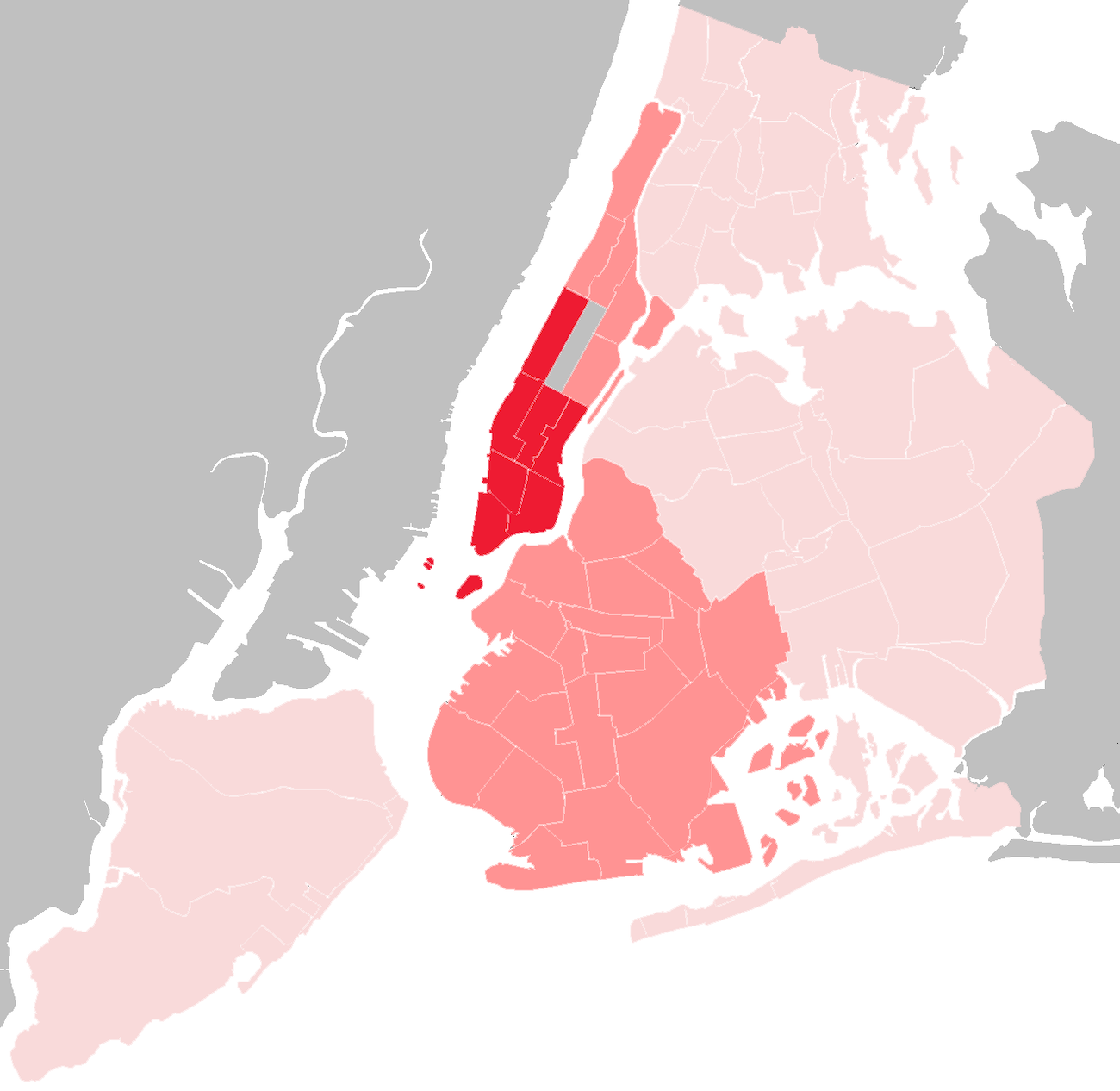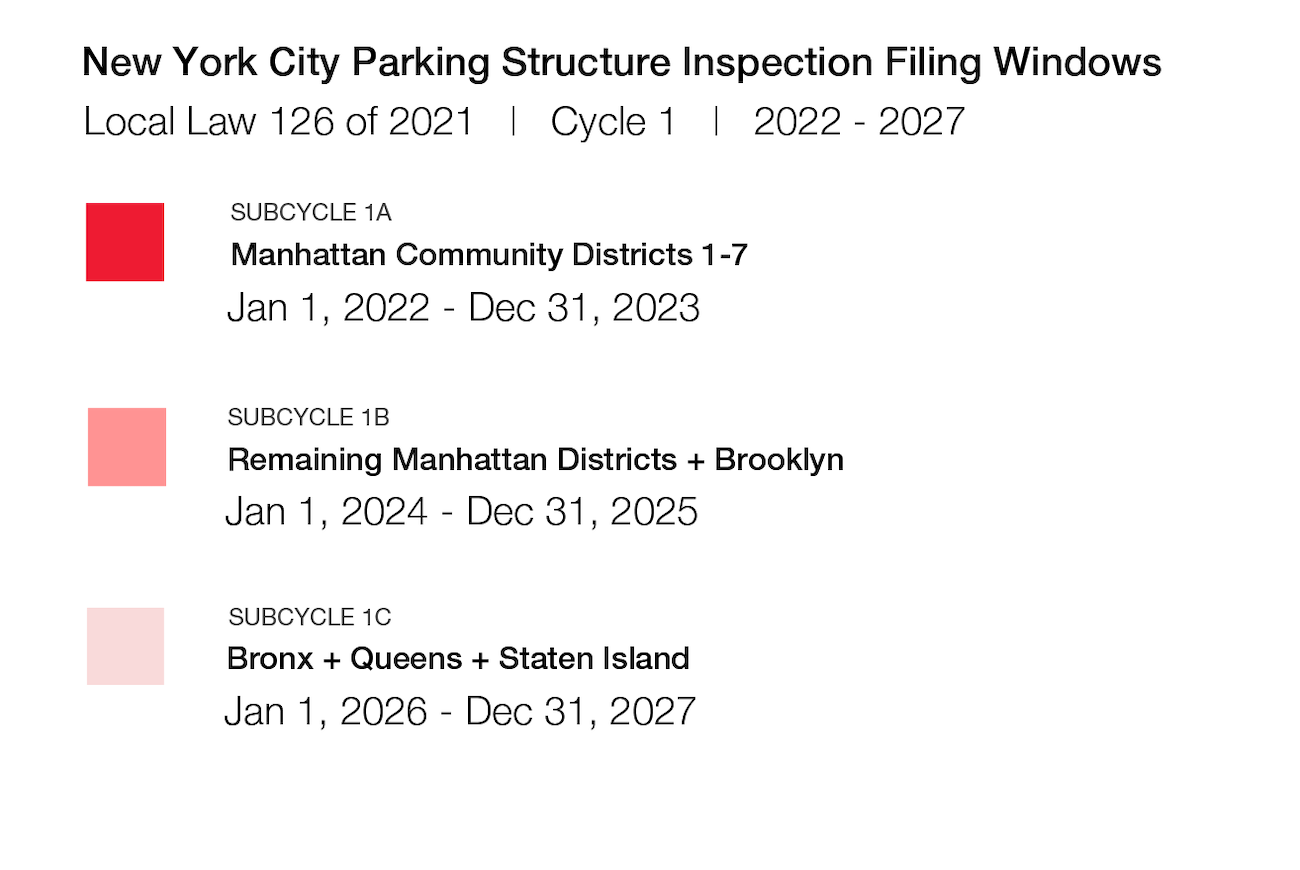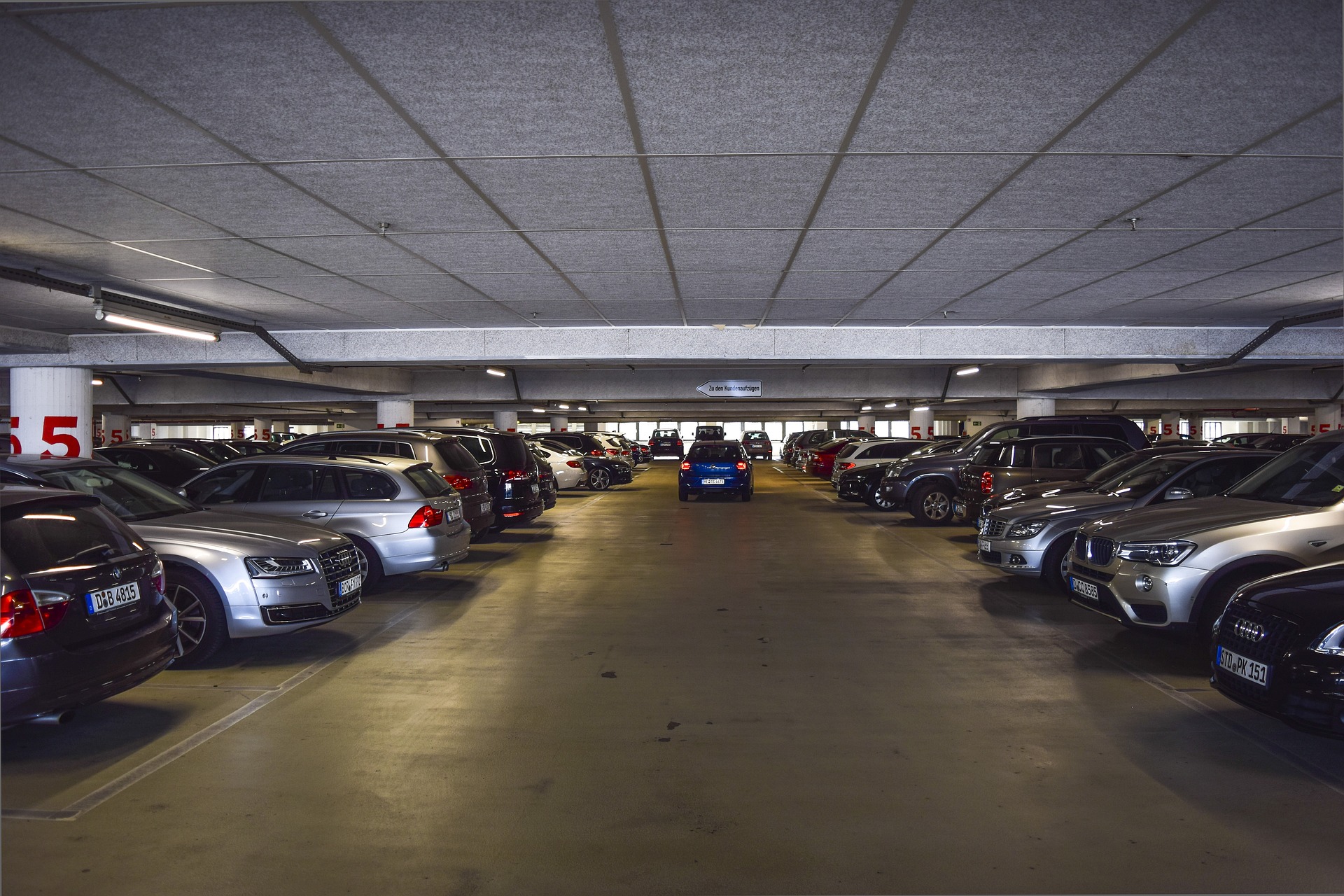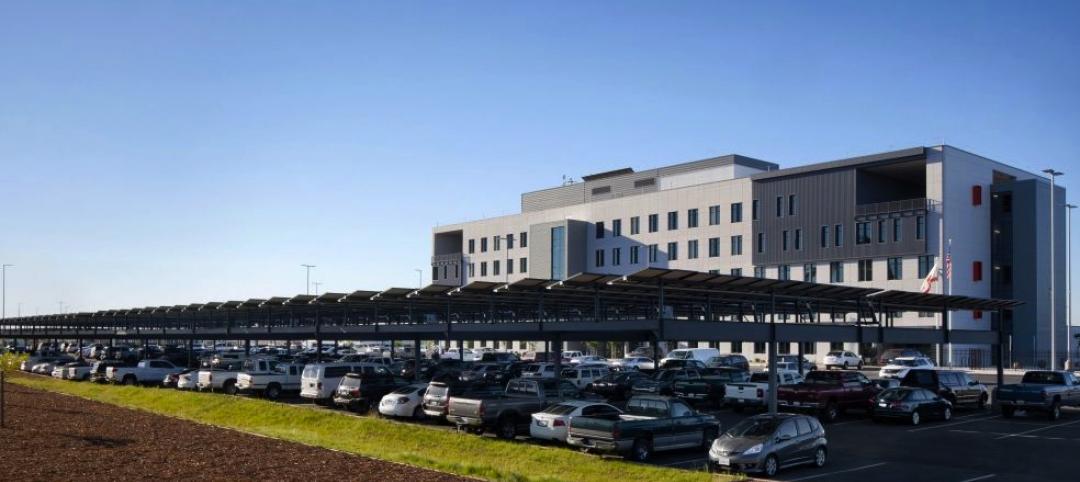Effective January 1, 2022, New York City requires garage owners to retain a specially designated professional engineer to conduct an assessment and file a report at least once every six years. Here are tips and best practices on how to comply with NYC Local Law 126 parking garage inspection rules. (Download a PDF version of this guide from Hoffmann Architects + Engineers.)
Why is New York City requiring parking garage inspections?
In 2018, New York State enacted a rule requiring periodic condition assessments, performed by a professional engineer, of all parking structures state-wide – except in New York City. Exempt from the state code, NYC developed its own rules for keeping garages and their appurtenances safe and well-maintained. With the passage of Local Law 126 of 2021 and RCNY §103-13, NYC has codified the requirements of this ambitious safety initiative.
Who must perform the parking garage inspection?
A Qualified Parking Structure Inspector (QPSI) has to evaluate the garage and file the report. A licensed engineer with at least three years of parking structure experience, a QPSI earns certification from NYC Department of Buildings (DOB) Parking Structure Unit.
What is required?
Any space for parking/storing motor vehicles, other than an unenclosed outdoor lot, 1- or 2-car garage, or auto service station or showroom, must undergo an assessment by a certified QPSI.
- Document review. The QPSI reviews previous reports, structural designs, repair drawings, violations, and other records.
- Condition assessment. The QPSI designs an assessment program specific to the parking structure, based on type of construction, age, exposure, and other features, as well as history of maintenance and repairs. Physical examination may include sounding, load tests, non-invasive scanning, and/or core extraction, in addition to visual inspection. In evaluating structural components, waterproofing, fireproofing, and wearing surfaces, the QPSI may need to order additional inspections, probes, or tests to identify the probable causes of observed defects.
- Immediate response to Unsafe conditions. Upon identifying an Unsafe condition, the QPSI promptly notifies the owner and the DOB and advises on appropriate protective measures.
- Documentation of deficiencies. Photos, sketches, or other means are used to identify the location and extent of defects.
- Annual observation checklist. During the condition assessment, the QPSI creates a checklist with elements to be inspected on an annual basis, customized to that specific garage.
- Final inspection. In a full walkthrough of each parking level, the QPSI verifies that reported findings reflect actual conditions.
- Report filing. Following a prescribed format, the QPSI prepares a Compliance Report with findings and recommendations, classifying the garage as Safe, Unsafe, or “Safe with Repairs and/or Engineering Monitoring” (SREM). The report is filed with the DOB.
What must be included in the report?
Per the code, the report must contain:
- A summary of findings and recommendations.
- Classification as Safe, SREM, or Unsafe.
- Building address, Block and Lot number, Building Identification Number (BIN), landmark status, and owner contact info.
- Building description, including size, dimensions, usage, age, type of construction, materials, and structural systems.
- Description of any distress, repairs, or modifications.
- Procedures used in assessing conditions.
- Extent and location of physical examinations, contractor contact info, a location diagram, and date of the assessment.
- Description, classification, and mapping of every significant condition, classifying each as Safe, SREM, or Unsafe.
- Recommendations for public protection (Unsafe conditions).
- Photographs of SREM and Unsafe conditions, keyed to locator drawings, plus photos of each elevation and parking level.
- Evaluation of guards and railings for positive securement.
- Analysis of causes of observed SREM and Unsafe conditions.
- Maintenance work to-date and a maintenance plan.
- An annual observation checklist.
- Proposed monitoring program for SREM parking structures.
- Recommendations for repairs or maintenance.
- Timeframe by which repairs must be performed.
- Work permits that may be required.
- Seal and signature of supervising QPSI.
Reports cannot be filed describing the same condition at the same location as SREM for two consecutive filing cycles. If a previous SREM condition remains uncorrected, the QPSI must classify the parking structure as Unsafe.
What happens if there is an Unsafe condition?
As soon as the QPSI reports an Unsafe condition, the owner must take steps to protect public safety. This might include cordoning off dangerous areas, erecting sidewalk sheds and fences, installing safety netting, and starting repair and reinforcement work.
Unsafe conditions must be corrected within 90 days, unless the QPSI determines that it is not possible to do so and indicates a different timeframe in the report. Deviation from this timeframe requires supporting documents justifying the change.
Within two weeks after repairs are complete, the QPSI must inspect the garage and file an amended report. Protective measures must remain in place until the report is accepted or the QPSI certifies that conditions were corrected and requests removal.
What about SREM conditions?
Any conditions described in the report as SREM must be corrected within the timeframe recommended by the QPSI. Requests for additional time must include supporting documents from the QPSI justifying the new timeframe.
Within three years of the initial filing, a QPSI must undertake another condition assessment and file an amended report, indicating the scope of ongoing monitoring, the status of conditions identified in the initial report as SREM, and classification of any new conditions. Before the next filing cycle, all SREM conditions must be repaired, as they must be reported as Unsafe if not corrected.


When do reports need to be completed and filed?
Owners are required to file a report at least once every six years, within the staggered filing windows in the diagram. Reports must be filed within 60 days of the condition assessment.
If the garage is located within a building subject to the Facade Inspection Safety Program (FISP), the owner may opt to change the parking structure filing window so it aligns with the FISP filing window. To do so, the owner must notify the DOB at least 180 days before the end of the assigned parking structure sub-cycle.
Owners of new garages must retain a QPSI to file a report six years from the first Certificate of Occupancy or, if that falls outside the applicable filing window, then within the window for the next cycle.
In addition to required repairs, what do owners need to do between filing cycles?
Each year, parking garages must undergo an “annual observation,” based on the checklist prepared by the QPSI in the inspection report. The person performing the annual observation is obligated to notify the owner and the DOB of any potentially hazardous conditions. Completed annual observation checklists must be kept on file and made available to the DOB if requested.
What are the penalties for failing to comply?
Filing late incurs a hefty penalty of $1,000 per month. Failing to file at all racks up an extra $5,000 per year, in addition to the $1,000 per month late filing penalty. Unsafe conditions not corrected within 90 days bring a penalty of $1,000 per month until the condition is fixed and an amended report is filed (unless an extension has been granted). If an owner allows a SREM condition to languish and become Unsafe in the next cycle, they’ll face a $2,000 penalty, plus risk more penalties if the condition continues to go unaddressed.
Waivers may be requested when change in ownership, a state of emergency, bankruptcy, or demolition preclude compliance.
What’s the main takeaway?
If you own a parking structure west or south of Central Park in Manhattan, you need to take immediate action. Owners of garages in these districts only have until December 2023 to retain one of the small number of professional engineers currently certified by NYC Department of Buildings as QPSIs, then to schedule the inspection and allow time for the QPSI to file a Compliance Report.
Owners of garages in upper Manhattan and Brooklyn don’t have much time to waste, either, with the filing period for those districts opening in 2024. For all parking structure owners in the City, it doesn’t hurt to plan ahead, as demand for limited QPSI resources and looming deadlines will likely lead to a last-minute scramble to meet inspection and filing requirements.
Resources
NYC Buildings Parking Structures Resource Page
Local Law 126 of 2021 – see Article 323, p. 229-232
RCNY §103-13: Periodic Inspection of Parking Structures
Hoffmann Architects + Engineers was among the first to have a certified QPSI. We are one of a select few currently authorized to carry out NYC Local Law 126 parking garage inspections. Reach out to us at (212) 789-9915 or hoffarch.com/contact-us.
Material provided is for informational purposes. Before taking action, consult a design professional.
Related Stories
| Jan 2, 2014
Sacramento utility maintenance facility earns LEED Platinum, targets net zero
The Sacramento Municipal Utility District’s new maintenance facility, which is targeting net zero, has received LEED Platinum certification.
| Dec 17, 2013
Kahn appoints Alan Cobb President and CEO
Cobb is the tenth president in the firm’s 118-year history. As President, Cobb is responsible for ensuring that all of the firm’s client issues are effectively address and that overall project team performance meets or exceeds client expectations for each and job the firm undertakes.
| Dec 13, 2013
Safe and sound: 10 solutions for fire and life safety
From a dual fire-CO detector to an aspiration-sensing fire alarm, BD+C editors present a roundup of new fire and life safety products and technologies.
| Dec 10, 2013
16 great solutions for architects, engineers, and contractors
From a crowd-funded smart shovel to a why-didn’t-someone-do-this-sooner scheme for managing traffic in public restrooms, these ideas are noteworthy for creative problem-solving. Here are some of the most intriguing innovations the BD+C community has brought to our attention this year.
| Nov 27, 2013
Exclusive survey: Revenues increased at nearly half of AEC firms in 2013
Forty-six percent of the respondents to an exclusive BD+C survey of AEC professionals reported that revenues had increased this year compared to 2012, with another 24.2% saying cash flow had stayed the same.
| Nov 27, 2013
Wonder walls: 13 choices for the building envelope
BD+C editors present a roundup of the latest technologies and applications in exterior wall systems, from a tapered metal wall installation in Oklahoma to a textured precast concrete solution in North Carolina.
| Nov 26, 2013
Construction costs rise for 22nd straight month in November
Construction costs in North America rose for the 22nd consecutive month in November as labor costs continued to increase, amid growing industry concern over the tight availability of skilled workers.
| Nov 25, 2013
Building Teams need to help owners avoid 'operational stray'
"Operational stray" occurs when a building’s MEP systems don’t work the way they should. Even the most well-designed and constructed building can stray from perfection—and that can cost the owner a ton in unnecessary utility costs. But help is on the way.
| Nov 13, 2013
Installed capacity of geothermal heat pumps to grow by 150% by 2020, says study
The worldwide installed capacity of GHP systems will reach 127.4 gigawatts-thermal over the next seven years, growth of nearly 150%, according to a recent report from Navigant Research.
| Nov 6, 2013
Energy-efficiency measures paying off for commercial building owners, says BOMA study
The commercial real estate industry’s ongoing focus on energy efficiency has resulted in a downward trend in total operating expenses (3.9 percent drop, on average), according to BOMA's Experience Exchange Report.

















